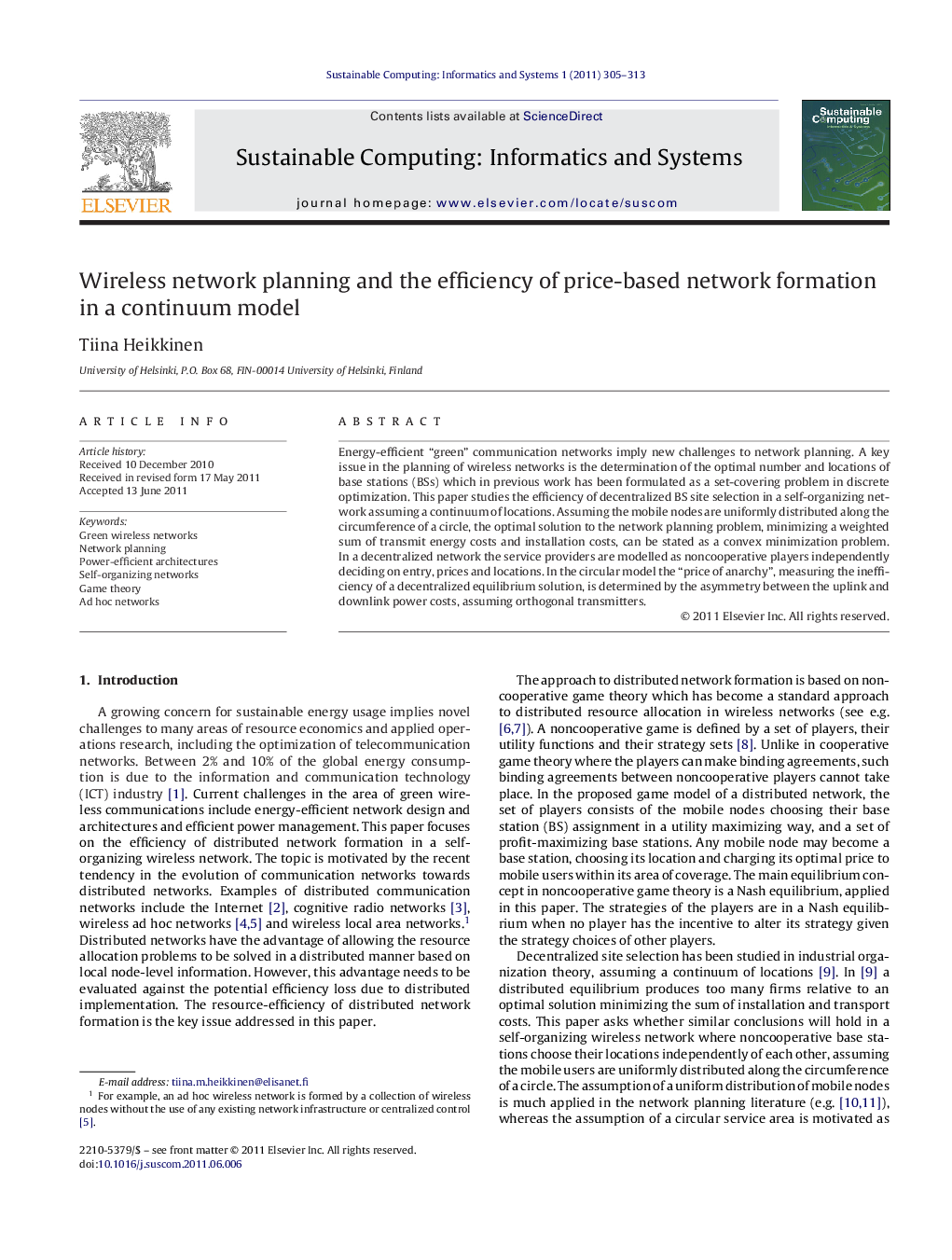| Article ID | Journal | Published Year | Pages | File Type |
|---|---|---|---|---|
| 493956 | Sustainable Computing: Informatics and Systems | 2011 | 9 Pages |
Energy-efficient “green” communication networks imply new challenges to network planning. A key issue in the planning of wireless networks is the determination of the optimal number and locations of base stations (BSs) which in previous work has been formulated as a set-covering problem in discrete optimization. This paper studies the efficiency of decentralized BS site selection in a self-organizing network assuming a continuum of locations. Assuming the mobile nodes are uniformly distributed along the circumference of a circle, the optimal solution to the network planning problem, minimizing a weighted sum of transmit energy costs and installation costs, can be stated as a convex minimization problem. In a decentralized network the service providers are modelled as noncooperative players independently deciding on entry, prices and locations. In the circular model the “price of anarchy”, measuring the inefficiency of a decentralized equilibrium solution, is determined by the asymmetry between the uplink and downlink power costs, assuming orthogonal transmitters.
► The efficiency of decentralized BS site selection in a self-organizing network is studied assuming a continuum of locations. ► Using a continuum model, the wireless network planning problem can be stated as a convex minimization problem. ► The efficiency loss due to the decentralization of the network formation was studied in terms of the price of anarchy. ► The price of anarchy of network formation is determined by the asymmetry between the uplink and downlink power costs. ► A reasonably efficient outcome can be achieved by restricting the link cost asymmetry, assuming orthogonal transmitters.
